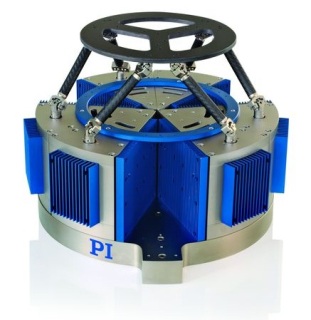Apr 3 2015
Physik Instrumente (PI) has developed parallel kinematic Hexapod systems with magnetic direct drives. They offer extremely high dynamics and are intended for motion simulations and test equipment in industry and research.
 PI’s newly developed parallel kinematic Hexapod systems with magnetic direct drives offer extremely high dynamics
PI’s newly developed parallel kinematic Hexapod systems with magnetic direct drives offer extremely high dynamics
The new high-dynamics H-860KMAG Hexapod is based on the PIMag® Voice Coil magnetic drives also developed by PI. The special design with flexure joints and contact-free magnetic drive principle has neither frictional nor rolling parts for guides and joints. It allows for zero-play positioning without mechanical noise in the drivetrain. The voice coil actuators work silently without wear and have a high service life.
An integrated linear encoder ensures reliable position control and repeatable accuracy. Also, due to the device's lightweight design, which consists of extremely stiff carbon fiber parts with low moving masses, fast and precise movements and high accelerations can be realized. This means operating frequencies of >100 Hz for small strokes. With their outstandingly dynamic features, Hexapods with magnetic PIMag® direct drives achieve velocities of several hundred mm/s and accelerations of up to 4 g. The reference-class 6-axis system has a parallel kinematic structure for six degrees of freedom and offers precise tracking of pre-defined trajectories, sinusoidal curves and freely definable paths with high trajectory accuracy. This also includes a powerful digital controller with open software architecture and Hexapod-specific software.
Typical areas of application of the new, highly dynamic H-860KMAG Hexapods include tests from image stabilization algorithms in camera systems or mobile devices where the standards of the Camera & Imaging Products Association (CIPA) are, of course, taken into account. Moreover, they are also ideally suitable for simulating oscillations. In the medical field, for example, they can be used for the simulation of eye movements, eye tracking, and for simulating any human or artificial movement.